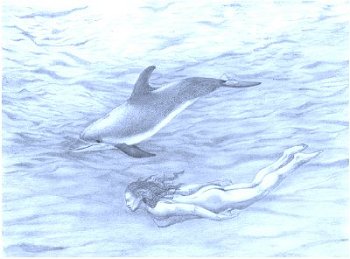
In general, species evolve and change in their appearance due to environmental stresses. As the environment changes, so too must those species which inhabit it. Organisms do not simply start changing because they believe it will be better for their offspring millions of years down the line.
Mechanisms such as geographic isolation hasten the evolutionary process by separating two groups of the same organism. Over time, the group which has been isolated will evolve into a completely different species. When the "barrier" is removed, the new species has changed so much from it's ancestral group that the two no longer interbreed.
Convergent evolution is another mechanism by which species not related to one another develop along similar lines. An example of convergent evolution can be clearly seen in aquatic mammals.

|
Dolphins have grown to resemble fish. They are hairless and streamlined, their forelegs have been modified into flippers, and they retain only remnant of their pelvic girdle. The environmental stresses associated with becoming fully aquatic favour this shape, hence the dolphin now looks more like a fish than the four legged creature who went back to the sea so long ago. This concept is very important in the study of human evolution, and will be used here to explain some of our more troublesome morphological differences. |